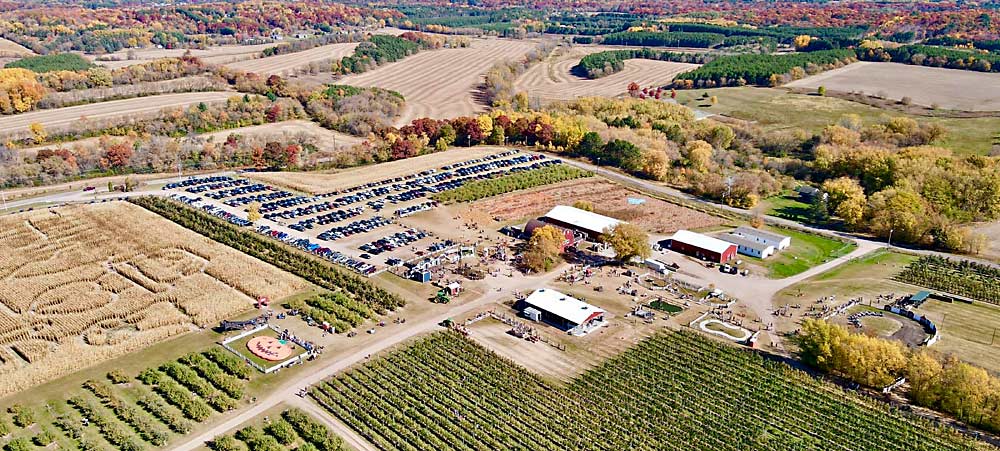
When COVID-19-related lockdowns began last spring, farm market and U-pick operations were allowed to remain open. But spring is generally a slow time of year for agritourism, and owners were looking ahead to the busier summer and fall seasons with uncertainty. Would they be allowed to remain open? Would customers feel safe showing up?
By the time fall arrived, the answers were much clearer: Yes, they could stay open. And yes, customers showed up — often in record-breaking numbers.
“Generally, fall seasons have been very busy,” said Suzi Spahr, executive director of the NAFDMA International Agritourism Association. “The public was hungry for an opportunity for an outdoor activity which could be done safely and in a setting where they could space themselves.”
Even the farms that limited the number of customers, for safety reasons, had good years, financially, because customers on average spent more than in previous years. For many farms, those extra sales probably made up for the extra workers who had to be hired and the extra cleaning that had to be done, Spahr said.
When the pandemic struck last March, the Ferguson family was in the midst of its annual planning sessions for the next fall season. Their agritourism operations in western Wisconsin only open in fall, said Andy Ferguson, who runs the retail side of the business.
The family had a decision to make: move forward with already planned expansions or pause for a year and see how the pandemic played out.
“During the spring planning months, we weren’t even sure if we would be allowed to open in the fall,” Ferguson said.
They decided to move forward, Ferguson said, and continue on their long-term growth path. As they got closer to fall, they kept hearing from customers asking if they were going to be open. It got to the point where they “almost felt a sense of duty to open in a safe way,” he said.
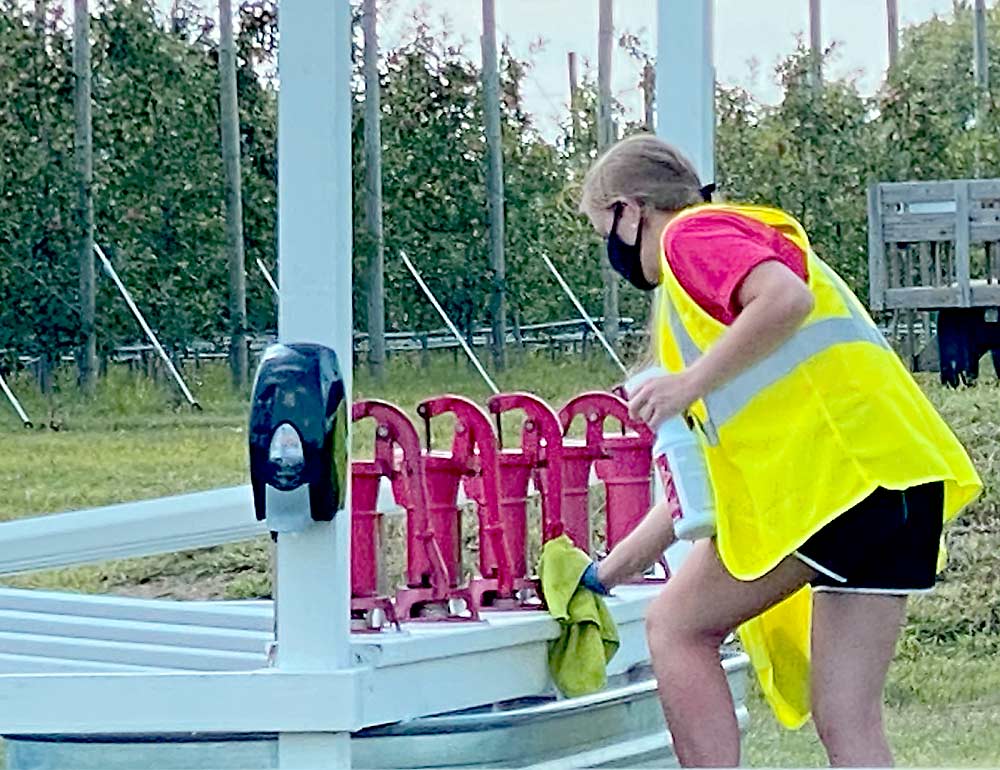
When fall came, about 125,000 customers showed up — even more than usual. Many of the extra visitors showed up on weekdays, however, which made the load more manageable, he said.
To prepare for the unusual season, the Fergusons hired extra employees. They created sanitizing crews, who wore bright vests and moved through the grounds constantly, concentrating on cleaning high-touch surfaces. They added outdoor admissions areas to help people spread out. All employees were required to wear masks, and customers had to wear masks indoors and for certain outdoor attractions.
“I never thought I would be installing plexiglass dividers on a hay wagon, but that’s one of the things we did to go above and beyond,” Ferguson said.
All the new measures cost more, of course, but the extra purchases made by customers made up for it, he said.
At Bowman Orchards, a U-pick farm near Albany, New York, fall crowds were up considerably. Weekends were busy as usual, but weekday attendance was up, too. Sales were probably 40 percent higher than normal, said Kevin Bowman, who owns the business with his wife, Martha.
Since Bowman Orchards opened more than 40 years ago, it’s been charging U-pick fruit customers by the pound. The Bowmans have wanted to shift away from that payment method for a while, and the pandemic gave them an opportunity. Now, instead of weighing U-pick fruit after it’s picked, they make customers prepay for a standard-sized container. They’ll probably stick with the new payment method, which was mostly well received, Bowman said.
“People liked the fact that they knew how much they were spending before they spent it,” he said.
They also limited the number of people on the horse-drawn hayrides and cleaned the wagons after each run. And customers were receptive to the mask-wearing requirements.
“Customers were policing other customers, so we didn’t have to do too much,” Bowman said.
Like other farm marketers, Calvin Beasley was in “uncharted territory” in 2020. “I don’t think anybody has any experience hosting tens of thousands of people during a pandemic,” said the owner of Beasley’s Orchard, located about 30 minutes west of Indianapolis, Indiana.
He said the pandemic — with its huge crowds, safety concerns and politicized opinions about things like mask-wearing — had the potential to be a “customer service nightmare.” But though the fall season was hectic, it ended up being a “light at the end of the tunnel” for customers who’d been cooped up for months.
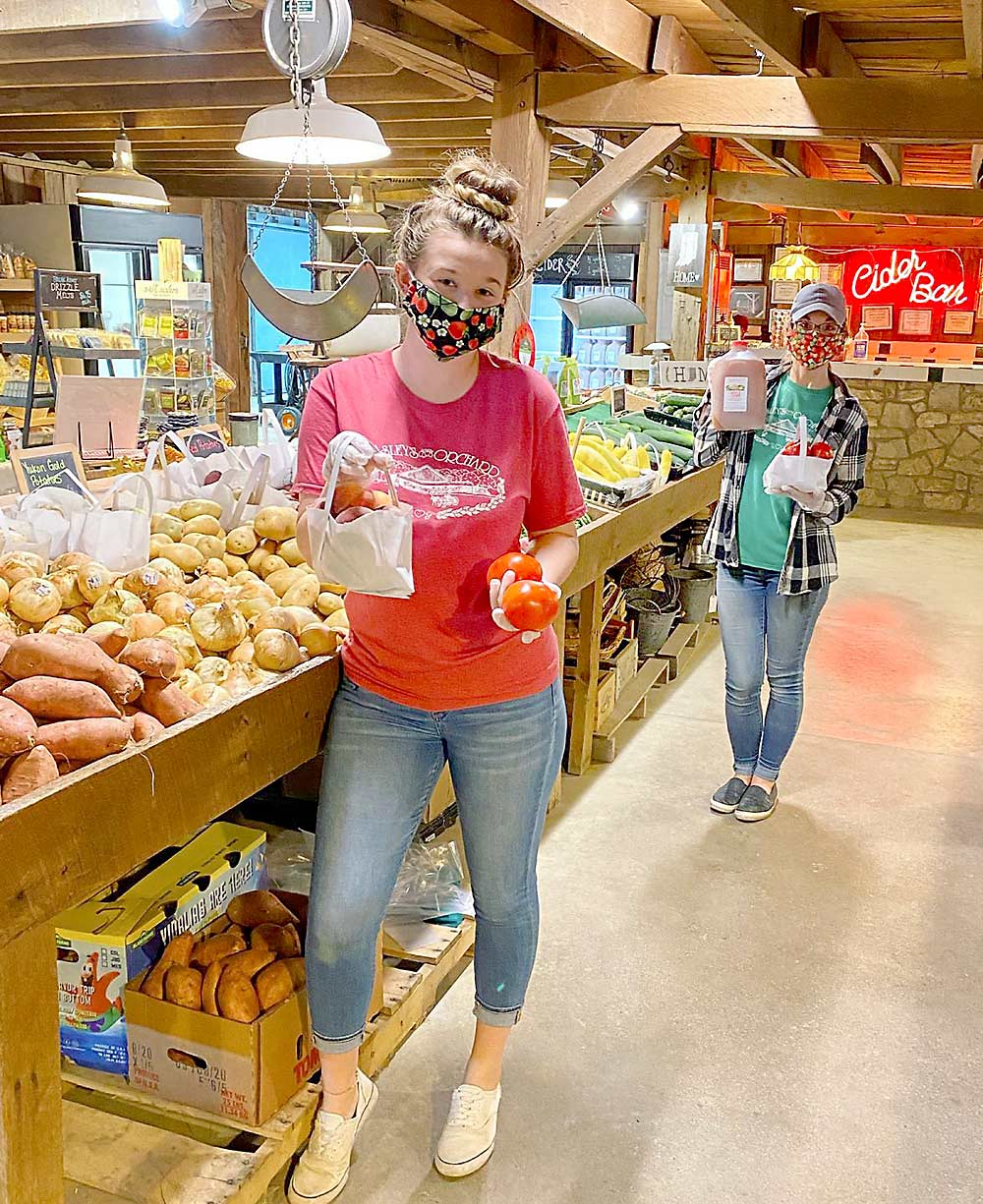
“There just wasn’t anything else to do,” Beasley said. “The apple orchard and pumpkin patch offered some semblance of normalcy to people.”
Most of his outdoor activities offered space for people to spread out, but there were a few “trouble points,” including the most popular attraction, the hayride to the pumpkin patch. They decided to require riders to wear masks, he said.
As a further complication, he had to close all of his U-pick apple rows in the fall, because a spring freeze had killed most of his crop. That led to longer lines and larger crowds in other parts of the grounds.
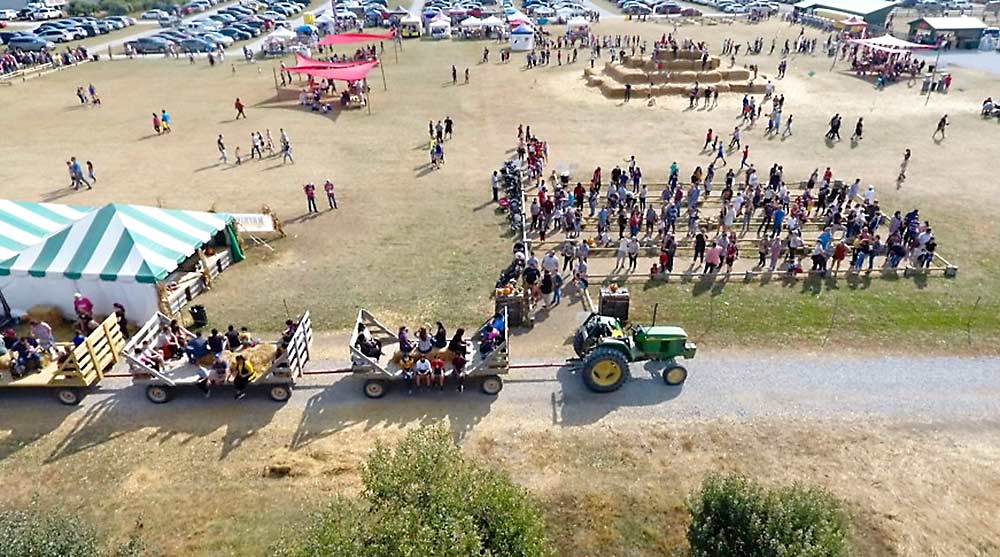
At Carter Mountain Orchard in Charlottesville, Virginia, the owners decided to control fall crowd sizes via a ticketing system. Because of that, they had smaller crowds than normal — but in terms of revenue, they had their best year ever, said co-owner Cynthia Chiles.
To make up for the limited number of people allowed on the grounds, they added a drive-through service in a different part of the orchard. Drivers could pick up apples, cider, pumpkins and other items from a barn (or have the items brought to them), then take a scenic drive around Carter Mountain.
“It was a great option for people who were not able to get tickets, or who wanted to stay in their car,” Chiles said.
Considering the struggles of restaurants and tourist venues during the pandemic, Chiles was grateful things went so smoothly for her market during fall 2020. She also was glad when it was over.
“I feel pretty fortunate,” she said. “But it was a tough one.”
—by Matt Milkovich

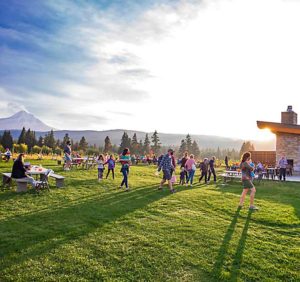
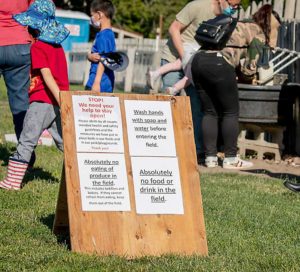
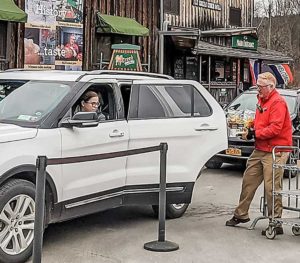





Leave A Comment